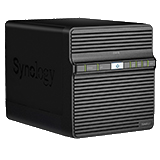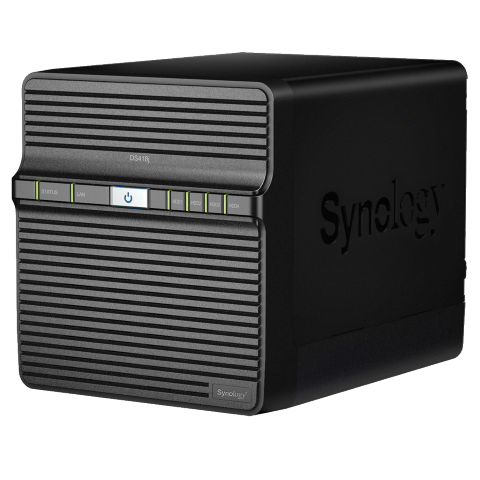The Synology DS418J NAS versus the Synology DS416J NAS – Choosing the right cost-effective NAS
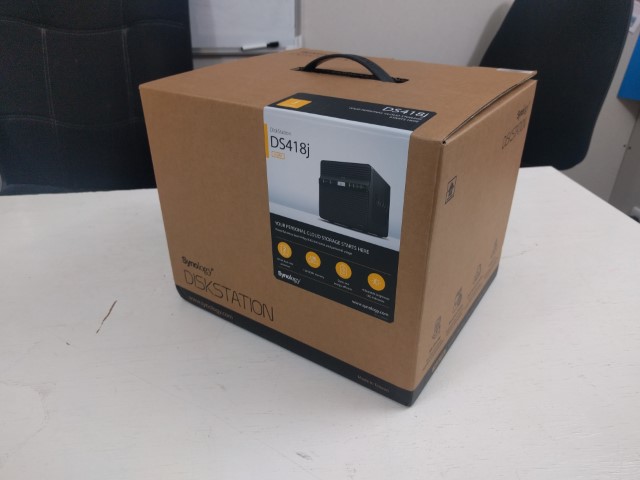 With so many Synology NAS devices available, it is all too easy to get a little lost amongst the different units. Often newer is not necessarily better and all too often it is the case that a brand new release from a popular hardware brand can be less than that or the unit before (I am definitely thinking of the DS214PLAY – oh how I miss you). Choosing between and deciding on a cost effect NAS server solution is especially tough because all too often the components are remarkably similar, relatively unknown (lesser known or demanded components are always lower in price) and ultimately you can end up getting lost after hours of price and device comparisons. Today however, as we compare the 2017 released synology DS418J NAS with the 2016 released DS416J NAS, many of the difficult choices that many people will make to decide are not only easy and straight forward, but almost ALL exclusively for the better. Choosing the right budget, cost-effective 4-Bay NAS has never been easy in 2017 and 2018.
With so many Synology NAS devices available, it is all too easy to get a little lost amongst the different units. Often newer is not necessarily better and all too often it is the case that a brand new release from a popular hardware brand can be less than that or the unit before (I am definitely thinking of the DS214PLAY – oh how I miss you). Choosing between and deciding on a cost effect NAS server solution is especially tough because all too often the components are remarkably similar, relatively unknown (lesser known or demanded components are always lower in price) and ultimately you can end up getting lost after hours of price and device comparisons. Today however, as we compare the 2017 released synology DS418J NAS with the 2016 released DS416J NAS, many of the difficult choices that many people will make to decide are not only easy and straight forward, but almost ALL exclusively for the better. Choosing the right budget, cost-effective 4-Bay NAS has never been easy in 2017 and 2018.
Which is better, the Synology DS418J or the Synology DS416J NAS?
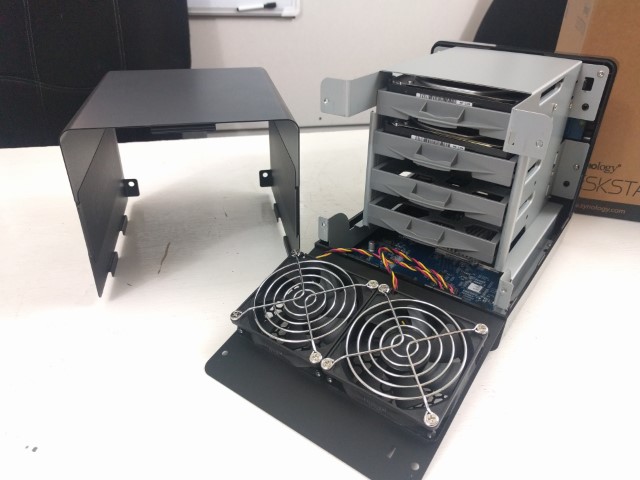 Synology have really make enormous steps in the hardware inside the chassis of the DS418J. The J series has always had a reputation for being very weak on the hardware front and when the DS416J was released early in 2016, it didn’t exactly wow the critics. With it’s rather weak ARM 2-core Marvell CPU with a frequency of 1.3GHz and 32-bit architecture, it had already classed itself as a budget NAS and multimedia concerns largely unaddressed. This was further compounded by a depressing 512MB of DDR3 Memory. It was pretty clear that for all but the most basic network storage tasks, the DS416J was going to struggle. This was made worse when it was shown that the price tag was going to be well in excess of £220 without tax (and that does not include the Hard Drives either). Yes, it is a 4-Bay NAS but you could get a reasonable powered 2-Bay from synology or QNAP for that kind of money with more than double the specifications (Synology DS216PLAY springs to mind). Unsurprisingly, it didn’t exactly fly of the shelves in terms of sales. We fast forward well over a year later and my how things have changed with the release of the Synology DS418J NAS. Synology really took notice of their growing reputation for lackluster hard ware and decided to do something about it.
Synology have really make enormous steps in the hardware inside the chassis of the DS418J. The J series has always had a reputation for being very weak on the hardware front and when the DS416J was released early in 2016, it didn’t exactly wow the critics. With it’s rather weak ARM 2-core Marvell CPU with a frequency of 1.3GHz and 32-bit architecture, it had already classed itself as a budget NAS and multimedia concerns largely unaddressed. This was further compounded by a depressing 512MB of DDR3 Memory. It was pretty clear that for all but the most basic network storage tasks, the DS416J was going to struggle. This was made worse when it was shown that the price tag was going to be well in excess of £220 without tax (and that does not include the Hard Drives either). Yes, it is a 4-Bay NAS but you could get a reasonable powered 2-Bay from synology or QNAP for that kind of money with more than double the specifications (Synology DS216PLAY springs to mind). Unsurprisingly, it didn’t exactly fly of the shelves in terms of sales. We fast forward well over a year later and my how things have changed with the release of the Synology DS418J NAS. Synology really took notice of their growing reputation for lackluster hard ware and decided to do something about it.
Why is the Synology DS418J NAS better than the DS416J?
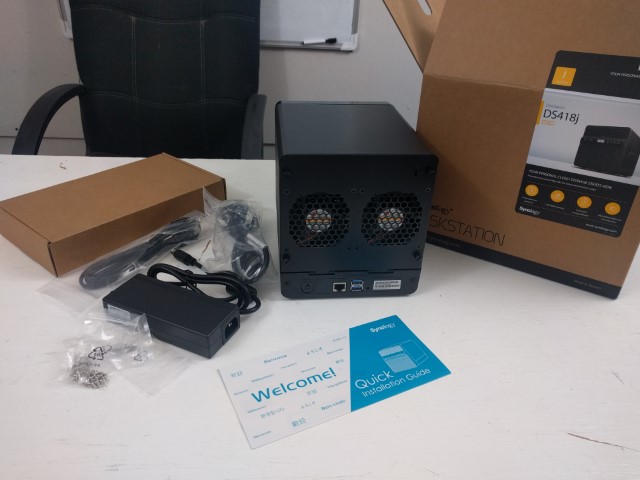 For a start, the CPU is leaps ahead in terms of efficiency, ability and overall power. The Synology DS418j arrives with an ARM CPU, but this time a much more proficient Realtek RTD1293. This chip is a 64-bit architecture, dual core CPU that has a higher frequency of 1.4GHz and with it you have a host of new application options open to you compared with the DS416J. Additionally thanks to this the DS418J uses less power than the DS416J when fully populated in a RAID 5 (even with that higher frequency chip – thanks to it being more power efficient and needing less typical power when performing likewise tasks). To assist these efficient operations, Synology also upgraded that other rather factor of poor memory options on the DS416J and in the newer NAS included 1GB of DDR4 Memory. This higher frequency RAM in the DS418J (1800Mhz vs 2133Mhz) means that operations are cached and processed quicker, meaning a more reliable and fast acting NAS server. Alongside these upgrades, Synology also ditched USB 2.0 completely from the DS418J and made it USB 3.0 Throughout.
For a start, the CPU is leaps ahead in terms of efficiency, ability and overall power. The Synology DS418j arrives with an ARM CPU, but this time a much more proficient Realtek RTD1293. This chip is a 64-bit architecture, dual core CPU that has a higher frequency of 1.4GHz and with it you have a host of new application options open to you compared with the DS416J. Additionally thanks to this the DS418J uses less power than the DS416J when fully populated in a RAID 5 (even with that higher frequency chip – thanks to it being more power efficient and needing less typical power when performing likewise tasks). To assist these efficient operations, Synology also upgraded that other rather factor of poor memory options on the DS416J and in the newer NAS included 1GB of DDR4 Memory. This higher frequency RAM in the DS418J (1800Mhz vs 2133Mhz) means that operations are cached and processed quicker, meaning a more reliable and fast acting NAS server. Alongside these upgrades, Synology also ditched USB 2.0 completely from the DS418J and made it USB 3.0 Throughout.
Which should I buy? The Synology DS418J or DS416J?
It is probably pretty obvious, but I would recommend buying the DS418J NAS from synology. you just get so much more for your money and if although it is around £30 more expensive than the older unit, you will more than make this money back in time saved in the first month alone! Ultimately whether you are thinking of buying the Synology DS418J as your first NAS, as a business or surveillance NAS, or even considering upgrading from your older DS416J – The Synology DS418J is an impressive change of release style from the guys at the big NAS brand and I recommend it highly.
Here are the official specs for each device, if you want to decide for yourself on stats and specifications alone:
| Synology NAS Model | Synology DS416J NAS | Synology DS418J NAS |
| Price | £220+ ex.VAT – Click to buy | £250+ ex.VAT – Click to Buy |
| CPU Model | Marvell Armada 388 88F6828 | Realtek RTD1293 |
| CPU Architecture | 32-bit | 64-bit |
| CPU Frequency | Dual Core 1.3 GHz | Dual Core 1.4 GHz |
| Memory | ||
| System Memory | 512 MB DDR3 | 1 GB DDR4 |
| Storage | ||
| Drive Bays | 4 | 4 |
| Compatible Drive Type* (See all supported drives) |
|
|
| Maximum Internal Raw Capacity | 40 TB (10 TB drive x 4) (Capacity may vary by RAID types) | 40 TB (10 TB drive x 4) (Capacity may vary by RAID types) |
| Maximum Single Volume Size |
|
|
| External Ports | ||
| RJ-45 1GbE LAN Port | 1 | 1 |
| USB 2.0 Port | 1 | 0 |
| USB 3.0 Port | 1 | 2 |
| File System | ||
| Internal Drives |
|
|
| External Drives |
|
|
| Notes |
|
|
| Appearance | ||
| Size (Height x Width x Depth) | 184 mm x 168 mm x 230 mm | 184 mm x 168 mm x 230 mm |
| Weight | 2.21 kg | 2.21 kg |
| Others | ||
| System Fan | 80 mm x 80 mm x 2 pcs | 80 mm x 80 mm x 2 pcs |
| Fan Speed Mode |
|
|
| Noise Level* | 19.1 dB(A) | 20.6 dB(A) |
| Scheduled Power On/Off | YES | YES |
| Wake on LAN/WAN | YES | YES |
| Power Supply Unit / Adapter | 90W | 90W |
| AC Input Power Voltage | 100V to 240V AC | 100V to 240V AC |
| Power Frequency | 50/60 Hz, Single Phase | 50/60 Hz, Single Phase |
| Power Consumption* | 21.6 W (Access) 12.75 W (HDD Hibernation) |
21.22 W (Access) 8.97 W (HDD Hibernation) |
| British Thermal Unit | 73.75 BTU/hr (Access) 43.53 BTU/hr (System Hibernation) |
72.41 BTU/hr (Access) 30.61 BTU/hr (HDD Hibernation) |
| Environment Temperature | ||
| Operating Temperature | 5°C to 40°C (40°F to 104°F) | 5°C to 40°C (40°F to 104°F) |
| Storage Temperature | -20°C to 60°C (-5°F to 140°F) | -20°C to 60°C (-5°F to 140°F) |
| Relative Humidity | 5% to 95% RH | 5% to 95% RH |
| Certification |
|
|
| Warranty | 2 Years | 2 Years |
| Surveillance Station | ||
| Maximum IP cam (Licenses required) | 16 (including 2 Free License) (See All Supported IP Cameras) | 16 (including 2 Free License) (See All Supported IP Cameras) |
| Total FPS (H.264)* | 480 FPS @ 720p (1280×720) 240 FPS @ 1080p (1920×1080) 150 FPS @ 3M (2048×1536) 60 FPS @ 5M (2591×1944) |
480 FPS @ 720p (1280×720) 240 FPS @ 1080p (1920×1080) 150 FPS @ 3M (2048×1536) 100 FPS @ 5M (2591×1944) |
| Total FPS (MJPEG)* | 240 FPS @ 720p (1280×720) 100 FPS @ 1080p (1920×1080) 60 FPS @ 3M (2048×1536) 30 FPS @ 5M (2591×1944) |
224 FPS @ 720p (1280×720) 150 FPS @ 1080p (1920×1080) 100 FPS @ 3M (2048×1536) 60 FPS @ 5M (2591×1944) |
📧 SUBSCRIBE TO OUR NEWSLETTER 🔔
🔒 Join Inner Circle
Get an alert every time something gets added to this specific article!
This description contains links to Amazon. These links will take you to some of the products mentioned in today's content. As an Amazon Associate, I earn from qualifying purchases. Visit the NASCompares Deal Finder to find the best place to buy this device in your region, based on Service, Support and Reputation - Just Search for your NAS Drive in the Box Below
Need Advice on Data Storage from an Expert?
Finally, for free advice about your setup, just leave a message in the comments below here at NASCompares.com and we will get back to you. Need Help?
Where possible (and where appropriate) please provide as much information about your requirements, as then I can arrange the best answer and solution to your needs. Do not worry about your e-mail address being required, it will NOT be used in a mailing list and will NOT be used in any way other than to respond to your enquiry.
Need Help?
Where possible (and where appropriate) please provide as much information about your requirements, as then I can arrange the best answer and solution to your needs. Do not worry about your e-mail address being required, it will NOT be used in a mailing list and will NOT be used in any way other than to respond to your enquiry.

|
 |
A Buyer's Guide to Travel Routers - GET IT RIGHT, FIRST TIME
Jonsbo N6 DIY NAS Case Review
The Best Bits (and Worst Bits) of NAS of 2025!
Minisforum MS-02 Ultra Review
Minisforum N5 NAS, 6 Months Later - Better, Worse, the Same?
Beelink ME Pro NAS Revealed
Access content via Patreon or KO-FI
Discover more from NAS Compares
Subscribe to get the latest posts sent to your email.


